What is Arjuna Pattai (Arjuna Bark)?
🌳 The Arjuna tree (Terminalia arjuna) is a sacred and medicinal tree highly valued in Ayurveda, Siddha, and Unani medicine. The bark of this tree is traditionally used for heart health, blood circulation, and overall well-being.
🌳 Native to India and Southeast Asia, Arjuna Bark is rich in antioxidants, flavonoids, and minerals that support cardiovascular health, blood pressure regulation, and cholesterol management.
🌳 Used for centuries in Ayurvedic formulations, it is known for its ability to strengthen the heart muscles, improve blood flow, and reduce stress on the heart.
Description of Arjuna Pattai (Arjuna Bark) Plant
🌿 Terminalia arjuna is a large, evergreen tree with a thick, buttressed trunk, smooth gray bark, and long, drooping branches.
🌿 The bark is pale pinkish-gray to reddish-brown, and it is the primary part used for medicinal purposes.
🌿 The tree produces small, yellowish-white flowers that bloom in clusters.
🌿 The leaves are simple, green, and arranged alternately, resembling those of the mango tree.
🌿 The fruit is woody, oval-shaped, and contains five hard wings.
🌿 The bark is harvested, sun-dried, and ground into powder for herbal remedies.
Morphological Characteristics of Arjuna Pattai (Arjuna Bark)
🌿 The Arjuna tree grows up to 20–25 meters in height, forming a broad canopy.
🌿 The bark is smooth, pinkish-gray, and peels off in large, irregular flakes.
🌿 Leaves are oblong or oval, dark green on top, and pale beneath, growing in opposite pairs.
🌿 Flowers are small, pale yellow or white, and bloom from March to June.
🌿 The fruit is a five-winged, woody capsule, maturing between September and November.
🌿 The bark contains triterpenoids, flavonoids, saponins, and minerals like calcium, magnesium, and zinc, known for their heart-protective and antioxidant effects.
Habitat of Arjuna Pattai (Arjuna Bark) – Terminalia arjuna
🌿 Terminalia arjuna is native to India, Sri Lanka, Bangladesh, and Myanmar and is widely found in tropical and subtropical regions.
🌿 Grows naturally along riverbanks, in dry deciduous forests, and in the foothills of the Himalayas.
🌿 Found in Madhya Pradesh, Uttar Pradesh, Bihar, Maharashtra, Karnataka, Kerala, Tamil Nadu, Andhra Pradesh, Odisha, and West Bengal.
🌿 The tree thrives in moist, fertile soil with good drainage and prefers warm, humid climates.
🌿 Requires moderate watering and is resistant to drought conditions.
Arjuna Pattai (Arjuna Bark) Organic Information
🌳 100% natural and vegetarian, free from artificial colors, harmful chemicals, pesticides, or additives.
🌳 Sustainably harvested from mature Arjuna trees, ensuring high-quality bark.
🌳 Carefully hand-processed, sun-dried, and finely ground to preserve its medicinal potency.
🌳 Ethically sourced and environmentally friendly, promoting sustainable farming practices.
🌳 Used in Ayurvedic formulations, herbal teas, and natural supplements for cardiovascular health, stress management, and immunity support.
Different Language Names
⭐ Tamil: திராவிய பட்டை (Thiraviya Pattai), அர்ச்சுன பட்டை (Arjuna Pattai)
⭐ Hindi: अर्जुन की छाल (Arjun Ki Chhal)
⭐ Sanskrit: अर्जुन त्वक् (Arjuna Tvak), कुकुभ (Kukubha)
⭐ Malayalam: അർജുനപ്പട്ട (Arjunappatta)
⭐ Kannada: ಅರ್ಜುನ ಮರದ ತೊಗಟೆ (Arjuna Marada Togate)
⭐ Telugu: అర్జున చెట్టు తొక్క (Arjuna Chettu Tokka)
⭐ Bengali: অর্জুন গাছের ছাল (Arjun Gacher Chhal)
⭐ Marathi: अर्जुन साल (Arjun Saal)
⭐ Gujarati: અર્જુન છાલ (Arjun Chhal)
⭐ Punjabi: ਅਰਜੁਨ ਦੀ ਛਾਲ (Arjun Di Chhal)
⭐ Odia: ଅର୍ଜୁନ ଗଛ ଛାଲ (Arjuna Gacha Chhal)
⭐ Assamese: অর্জুন গছৰ ছাল (Arjun Gasor Chhal)
⭐ Urdu: ارجن کی چھال (Arjun Ki Chhal)
⭐ Konkani: अर्जुन साल (Arjun Saal)
⭐ Tulu: ಅರ್ಜುನ ಸಿಪ್ಪೆ (Arjuna Sippe)
⭐ Meitei (Manipuri): অর্জুন গছৰ ছাল (Arjun Gachor Chhal)
⭐ Dogri: अर्जुन की छाल (Arjun Ki Chhal)
⭐ Kashmiri: अर्जुन छाल (Arjun Chhal)
⭐ Maithili: अर्जुन छाल (Arjun Chhal)
⭐ Chhattisgarhi: अर्जुन छाल (Arjun Chhal)
⭐ Rajasthani: अर्जुन छाल (Arjun Chhal)
⭐ Sindhi: ارجن جي ڇال (Arjun Ji Chhal)
⭐ Nepali: अर्जुन छाल (Arjun Chhal)
⭐ Arabic: لحاء الأرجونا (Lihā’ Al-Arjuna)
⭐ Chinese: 阿尔茹那树皮 (Ā’ěr Rú Nà Shùpí)
⭐ Malay (Malaysia): Kulit Pokok Arjuna
⭐ Thai: เปลือกต้นอาร์จูนา (Pluak Ton Arjuna)
⭐ Vietnamese: Vỏ cây Arjuna
⭐ Spanish: Corteza de Arjuna
⭐ French: Écorce d’Arjuna
⭐ Sri Lankan Sinhala: අර්ජුන ගස් පතල (Arjuna Gas Patala)
⭐ Indonesian: Kulit Pohon Arjuna
⭐ German: Arjuna-Baumrinde
⭐ Italian: Corteccia di Arjuna
⭐ Family Name: Combretaceae (Rangoon Creeper family)
⭐ Botanical (Latin) Name: Terminalia arjuna
⭐ Common Names: Arjuna Bark, Arjun Tree Bark, White Marudah Bark
Nutritional Information (per 100g)
Energy: 180-220 kcal
Carbohydrates: 35-45g
Dietary Fiber: 10-15g
Protein: 4-8g
Calcium: 200-400mg
Iron: 5-10mg
Vitamin C: 15-25mg
Phytochemicals: Tannins, Flavonoids, Saponins, Glycosides
Nutritional Facts
✔ Supports heart health and improves cardiovascular function.
✔ Rich in antioxidants, helping reduce oxidative stress.
✔ Contains anti-inflammatory and anti-hypertensive properties.
✔ Aids in maintaining healthy cholesterol and blood pressure levels.
✔ Free from artificial colors, flavors, and preservatives.
Dosage
For Adults: 1-2 teaspoons (3-5g) per day.
For Children: ½ teaspoon (1-2g) per day.
Maximum Dosage: Do not exceed 10g per day unless recommended by a healthcare professional.
How to Consume
Internal Use
Arjuna Bark Powder with Water: Mix 1 teaspoon of powder in warm water and drink daily.
Arjuna Bark Tea: Boil 1 teaspoon of bark in water, strain, and drink.
With Honey: Mix the powder with honey and consume for added heart health benefits.
External Use
For Skin Care: Make a paste with water or rose water and apply it to wounds, rashes, or skin irritations.
For Oral Health: Use the powder as a natural toothpowder to support oral hygiene.
How to Use & Store
✔ Store in an airtight container, away from moisture and direct sunlight.
✔ Ensure the lid is tightly closed after every use.
✔ Keep in a cool, dry place to maintain freshness and potency.
Caution to Be Taken
⚡ Consult a physician if pregnant, breastfeeding, or on medication.
⚡ Possible interactions with medications, especially those affecting heart health, blood pressure, and blood sugar levels.
⚡ Avoid excessive consumption to prevent potential toxicity or adverse effects.
⚡ Not suitable for infants or children without medical advice.
⚡ Long-term use is not recommended without professional guidance.
⚡ Always consult a healthcare provider for personalized dosage and safety considerations.
Important Tips
☀️ Start with a Low Dose 🌱: Begin with a small amount to assess tolerance.
☀️ Use in Moderation 🌿: Avoid excessive or prolonged use without guidance.
☀️ Choose High-Quality Products 🍁: Purchase from trusted sources to ensure purity and effectiveness.
☀️ Conduct a Patch Test 🍂: Always test on a small skin area before topical application.
☀️ Proper Storage Matters 🍃: Store in airtight, non-metal containers to preserve potency and freshness.
Harvesting & Manufacturing Method
☀️ Organically Sourced 🌳: Terminalia Arjuna (Arjuna Bark) is cultivated without synthetic chemicals, ensuring natural purity.
☀️ Sustainably Harvested 🌿: Collected from naturally growing Arjuna trees in ecologically balanced regions.
☀️ Handpicked & Sun-Dried 🌱: Dried naturally under the sun to retain its medicinal properties.
☀️ No Additives or Chemicals 🌾: Processed without artificial preservatives, maintaining its raw and authentic nature.


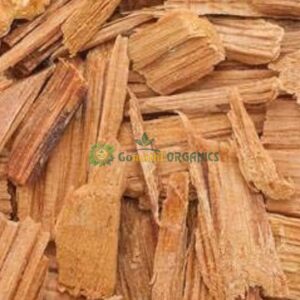
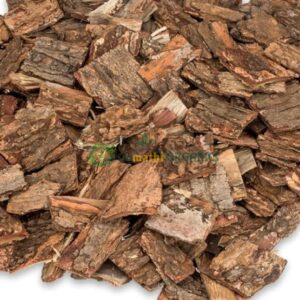
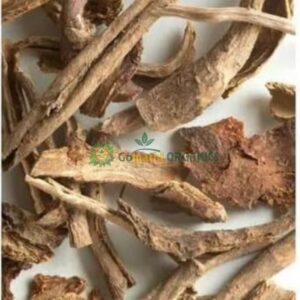

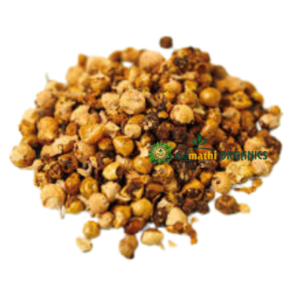
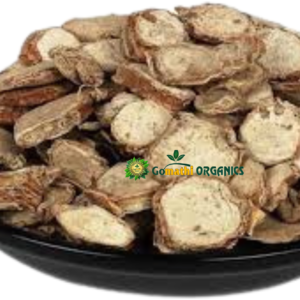

Reviews
There are no reviews yet.